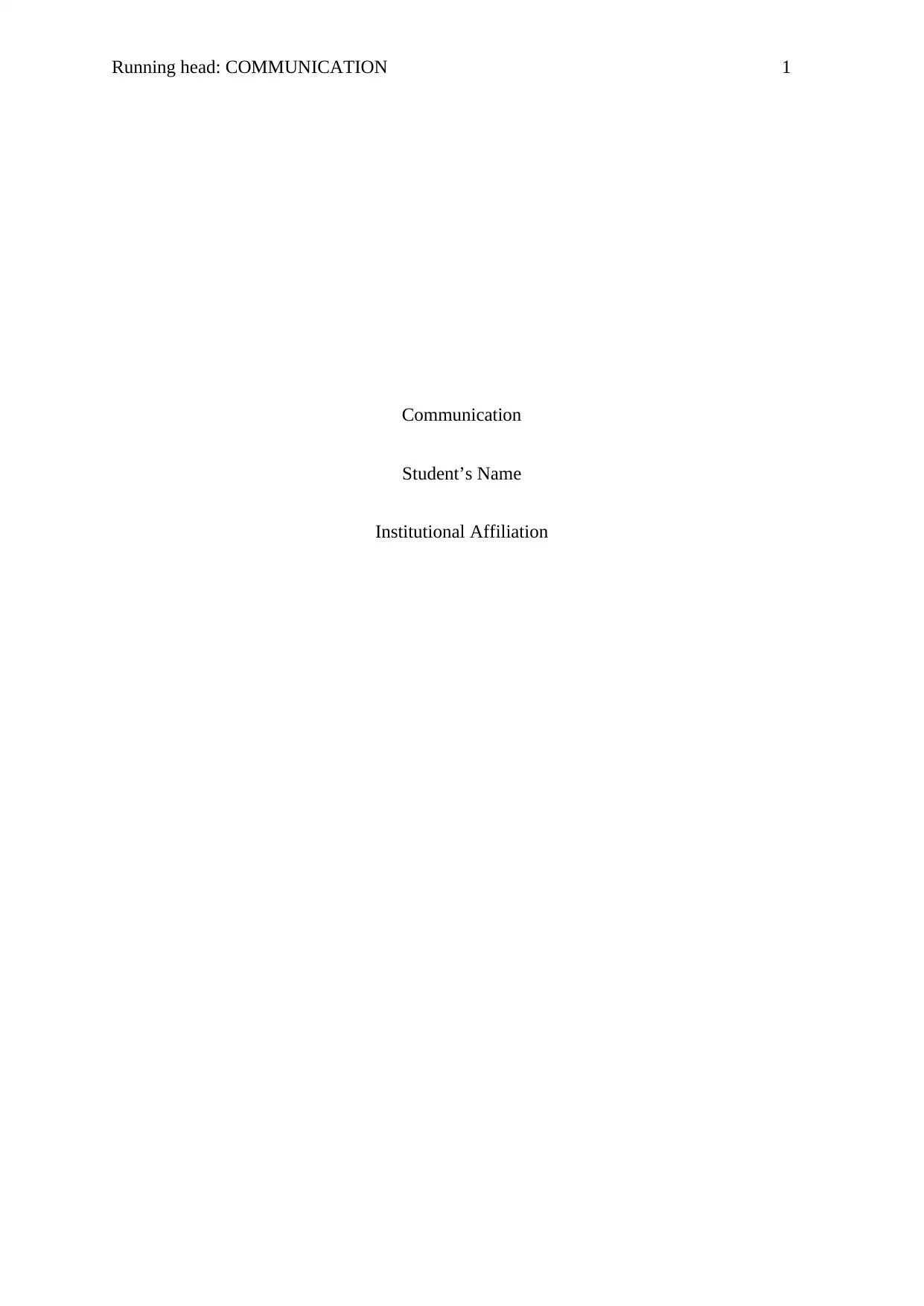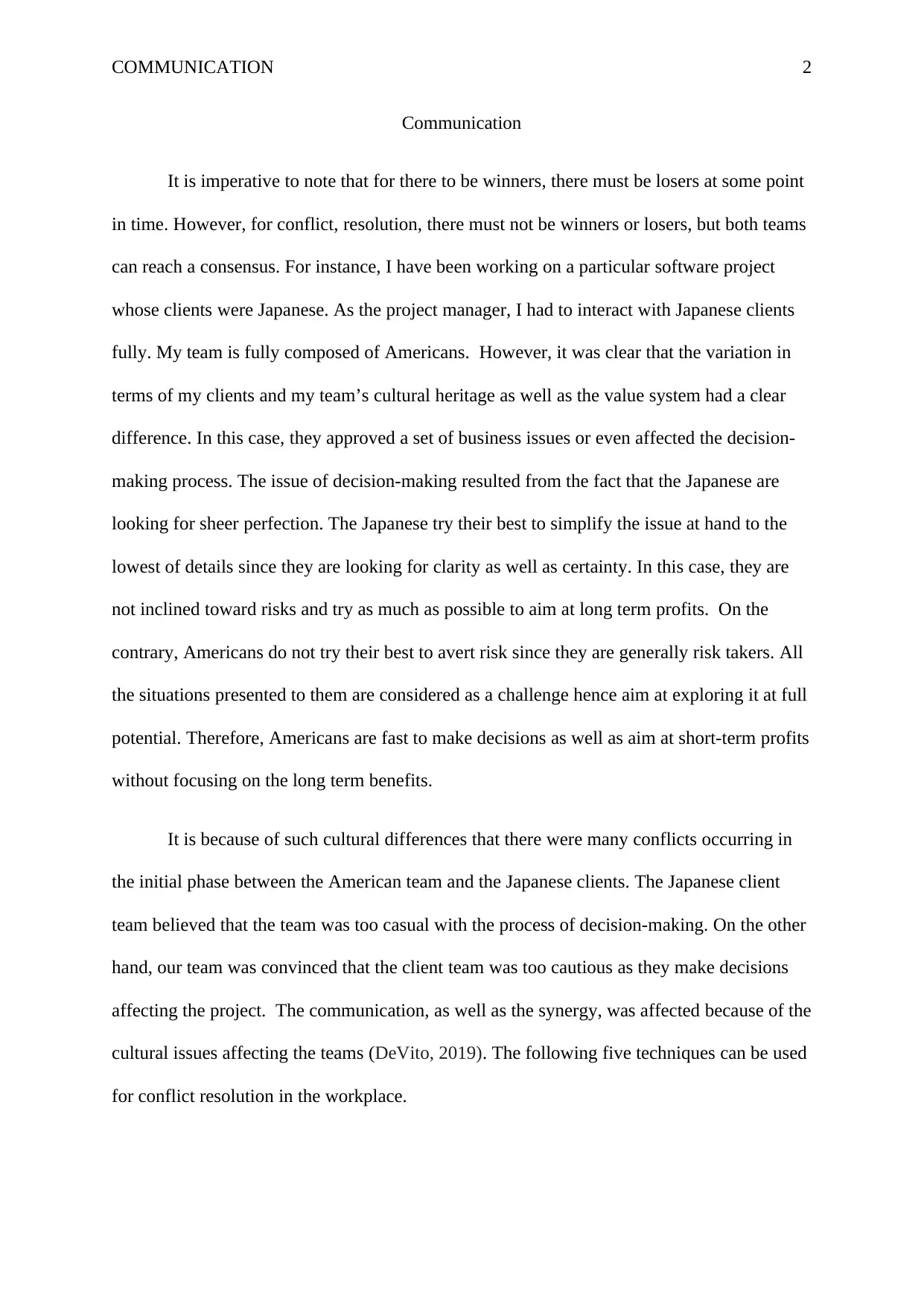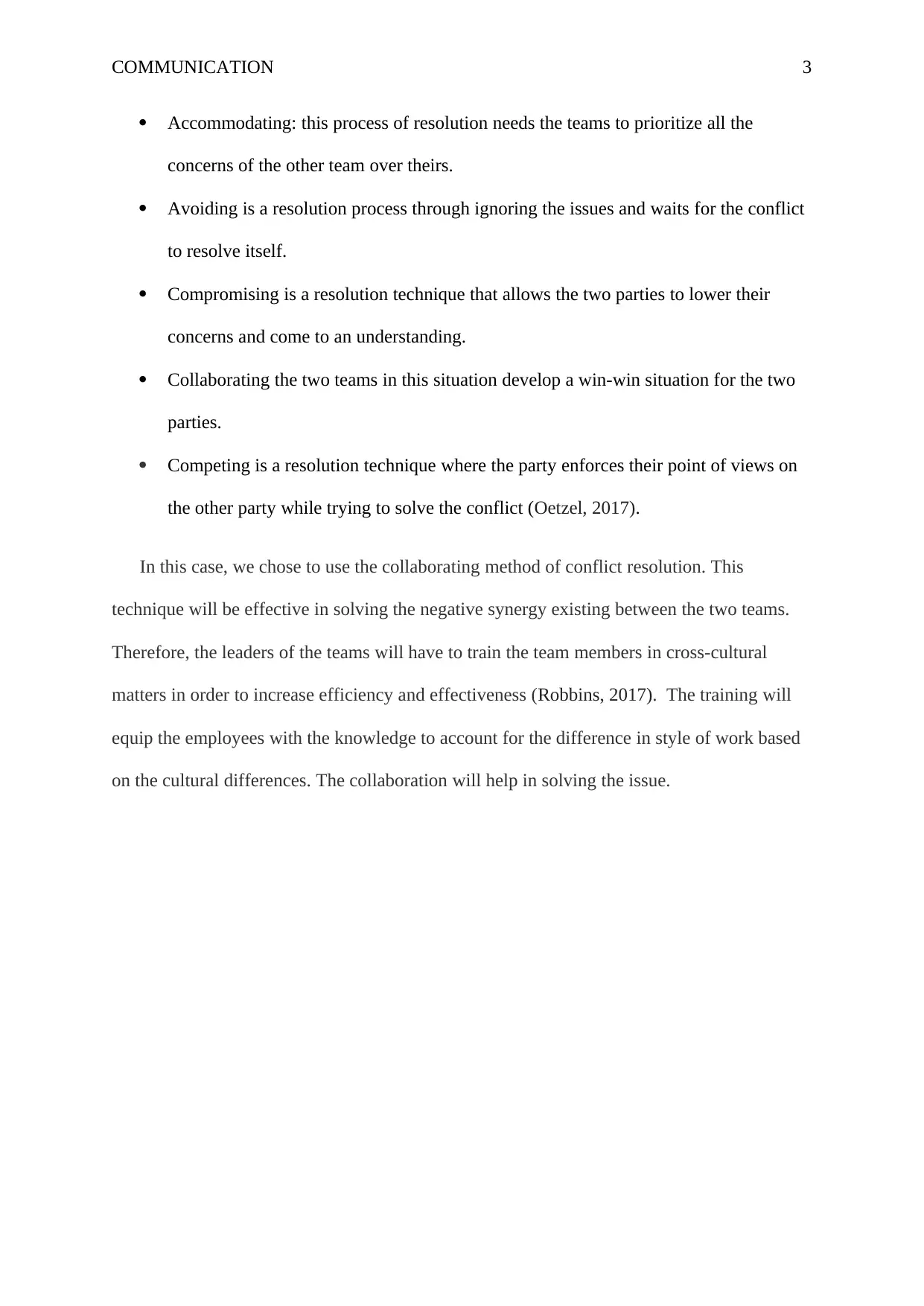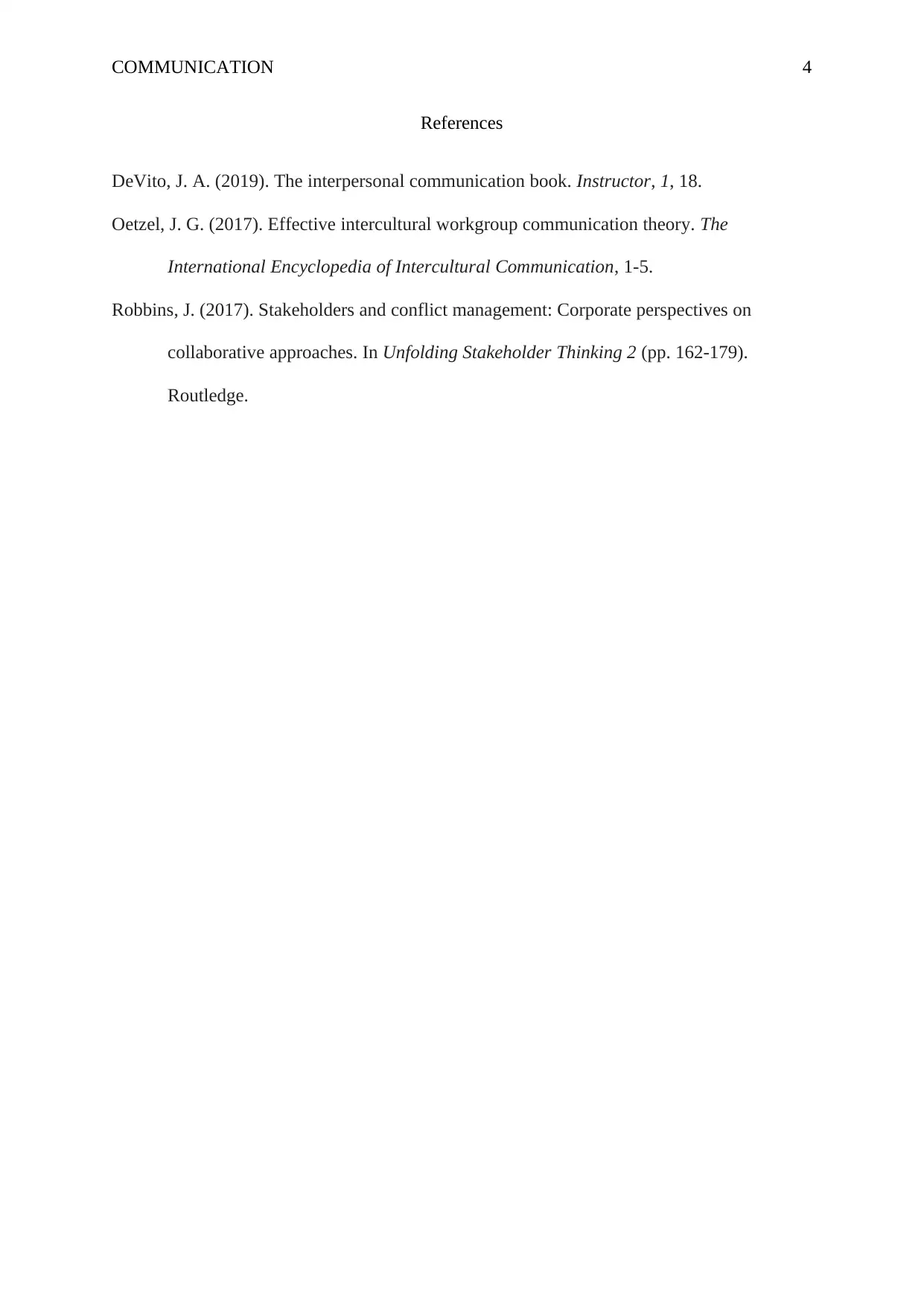Communication Conflict: Analysis of Resolution Strategies and Styles
VerifiedAdded on 2022/11/17
|4
|659
|260
Discussion Board Post
AI Summary
This discussion post analyzes a real-world interpersonal conflict experienced by the student in a professional setting involving a software project with Japanese clients and an American team. The conflict arose from cultural differences in decision-making styles, with the Japanese emphasizing perfection and long-term profits, while the Americans prioritized risk-taking and short-term gains. The student, acting as project manager, identifies how these differences led to communication and synergy issues between the teams. The post explores the quote, "In order for there to be winners, there have to be losers," and then discusses five conflict resolution techniques: accommodating, avoiding, compromising, collaborating, and competing. The student chose the collaborating method to resolve the conflict. The student advocates for cross-cultural training to improve communication and effectiveness. The student provides references from communication literature to support the analysis.
1 out of 4










![[object Object]](/_next/static/media/star-bottom.7253800d.svg)